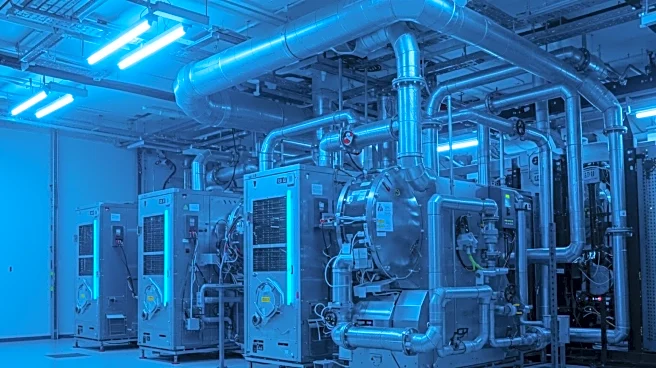Rapid Read • 8 min read
South Eastern Railway has initiated trials of a new thermal management system, IsoMat, to safeguard railway infrastructure from extreme heat. Developed by Flint Engineering, this technology is being tested on the Tonbridge to Hastings line. IsoMat reduces peak cabinet temperatures by over 21% during the hottest days, requiring no power, maintenance, or internal modifications. The system can be installed quickly by two people. Ten vulnerable signalling cabinet locations on the Kent Route will be equipped with IsoMat units this summer, following a successful pilot. Network Rail supports this initiative as part of a broader effort to explore sustainable cooling technologies to enhance climate resilience across the UK's rail network.
AD
The implementation of IsoMat technology is crucial as extreme weather events become more frequent, posing risks to railway infrastructure. By reducing the impact of heat on signalling equipment, South Eastern Railway aims to maintain service reliability for passengers and freight customers. This innovation addresses climate resilience challenges, offering operational benefits and reducing the likelihood of heat-related failures that can lead to service delays and costly maintenance. The success of this trial could lead to wider adoption of passive cooling technologies in the rail industry, enhancing infrastructure reliability during heatwaves.
Flint Engineering is preparing to scale up production of IsoMat for broader deployment by summer 2026. Network Rail's support indicates potential expansion of this technology across the UK rail network. Additionally, Flint Engineering is experiencing international demand for IsoMat, with applications in industries such as construction, refrigeration, and electrification where efficient heat management is essential. The ongoing trials and subsequent production scaling could lead to significant advancements in climate resilience strategies within the rail sector and beyond.
The adoption of IsoMat technology highlights the growing need for innovative engineering solutions to address climate change impacts on infrastructure. As heatwaves become more common, industries must adapt to ensure operational continuity and safety. The success of IsoMat could inspire further research and development in passive cooling technologies, potentially influencing policy decisions regarding infrastructure resilience and sustainability.
AD
More Stories You Might Enjoy











